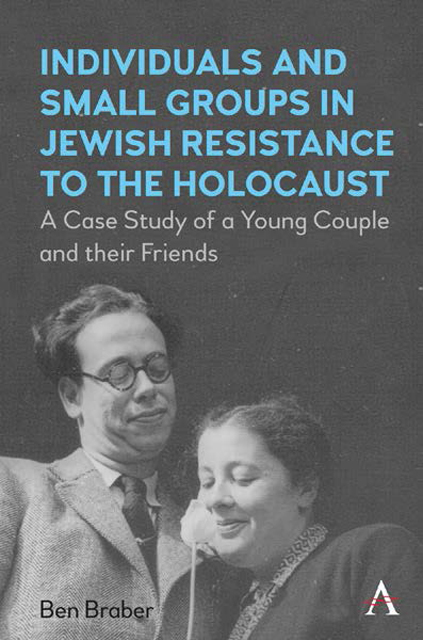 Individuals and Small Groups in Jewish Resistance to the Holocaust
Individuals and Small Groups in Jewish Resistance to the Holocaust Summary
The second child of Ter and Nol was born on 7 September 1943. They called the girl Marjan. The pregnancy had been unplanned. Means of contraception were difficult to get, but Ter had a diaphragm. However, she found it too complicated to use: ‘In these days you didn't discuss these matters with your husband.’ A visit to the doctor didn't help. He believed: ‘It's all rubbish. You must sacrifice.’ Ter contemplated termination of the pregnancy, but she rejected an abortion:
Actually, I loved having children. I also found it too dangerous for the person who had to abort me under these wartime circumstances. And I probably also believed something like ‘damn it, I won't let these Nazis dictate whether or not I could bear a child.’
During the last few weeks of the pregnancy, Nol and Ter had hidden in the attic of the workshop in the Gallery. Their first child, Ruth, was still with friends in Gramsbergen. Nol had stomach trouble. The group cared for him with food, especially milk to ease his stomach pains. It was delivered twice a week. Ter couldn't give birth in that attic. They started looking for a safe place. She heard about a natal clinic in Haarlem, about 30 kilometres west of Amsterdam, where her baby could be delivered. That was impossible in Amsterdam, because she would be recognised and could be betrayed, as many people knew Ter from the time she worked as a nurse.
To erase the trail, Ter first hid at another address. Luckily that was only for a couple of days, because the place was infested with lice and Ter noticed that in the final stages of a pregnancy it's difficult to catch lice between your navel and knees. From that address she travelled to the natal clinic. Marjan was born there in awkward conditions:
No, that was of course not easy. It went well, objectively speaking, well. But the nurse who was on duty that night, as I found out later, had never been present at a delivery. She was so scared that on the moment I rung to ask the midwife to come, she hid herself. So the baby was born before the midwife arrived and without the nurse being present.
- Type
- Chapter
- Information
- Individuals and Small Groups in Jewish Resistance to the HolocaustA Case Study of a Young Couple and their Friends, pp. 97 - 100Publisher: Anthem PressPrint publication year: 2022


